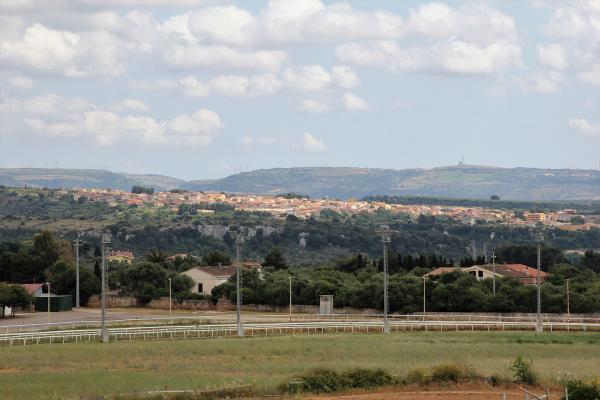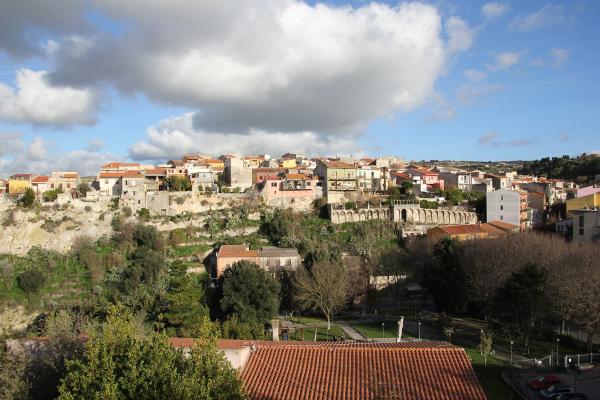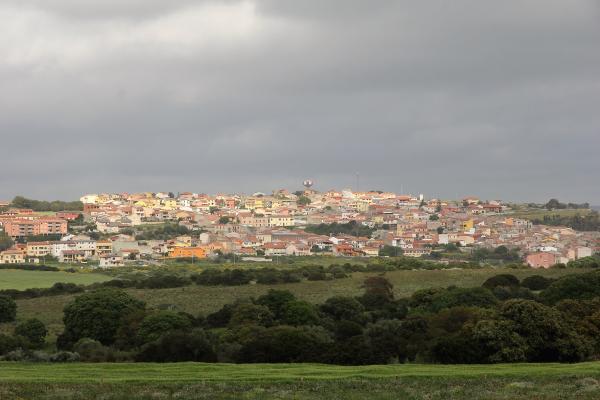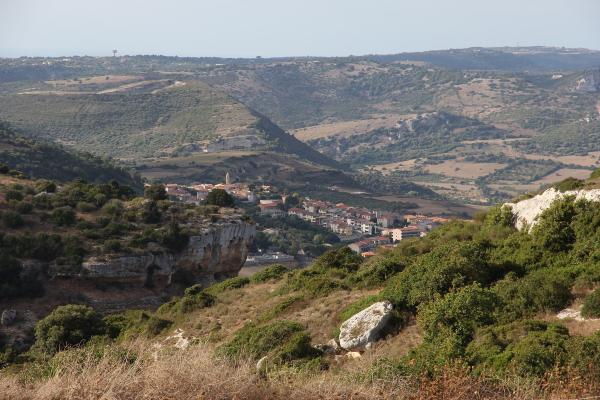Its origins are thousands of years old, with multiple construction phases. It has four names and it is not clear when it was built, despite being mentioned in an ancient document. There are numerous elements that make the church of Santa Croce di Usini unusual, starting with the names that have followed one another: in ancient times it was Santa Maria d’Usine, then it was known locally as Madonna de s’Ena Frisca, or of the ‘cool spring’, due to the presence of a spring nearby, and also as Santa Maria del Cimitero (of the Cemetery), as it was built in the area where the ancient burial place of Usini was located. Lastly, in the 19th century it got its current name from the brotherhood that took over its regency.
The building stands along the road that leads to the village centre, coming from Sassari, a particularly busy route. To be precise, the church is located just over halfway along the route that separated Sassari’s monastery of San Pietro di Silki and the Abbey of Nostra Signora di Paulis, now in ruins, in the territory of Ittiri.
Its origins are thousands of years old, with multiple construction phases. It has four names and it is not clear when it was built, despite being mentioned in an ancient document. There are numerous elements that make the church of Santa Croce di Usini unusual, starting with the names that have followed one another: in ancient times it was Santa Maria d’Usine, then it was known locally as Madonna de s’Ena Frisca, or of the ‘cool spring’, due to the presence of a spring nearby, and also as Santa Maria del Cimitero (of the Cemetery), as it was built in the area where the ancient burial place of Usini was located. Lastly, in the 19th century it got its current name from the brotherhood that took over its regency.
The building stands along the road that leads to the village centre, coming from Sassari, a particularly busy route. To be precise, the church is located just over halfway along the route that separated Sassari’s monastery of San Pietro di Silki and the Abbey of Nostra Signora di Paulis, now in ruins, in the territory of Ittiri. The title was mentioned in the condaghe of San Pietro di Silki: the reference to a ‘Church of Santa Maria’ would mean that it dates back to the first decades of the 12th century. Others, however, tend to place it between the 13th and 14th centuries. Of the original Romanesque structure, with a single nave and built in limestone, you can admire the façade and part of the sides decorated with a cornice and small pointed arches. The cornice continues on the façade, delimiting the pediment. The small arches appear here too, under the pediment and - with an elongated shape - under the slopes. The transept and windows date back to a second construction phase, while the bell tower, sacristy and a series of chapels were added later. The apse has a quadrangular shape, with a barrel vault. Inside, you will see Baroque-style multicoloured wooden altars and an unusual window to the right of the main altar, decorated with trilobate arches typical of the Gothic-Catalan style.
You can continue the tour of the architectural beauty of Usini with the Parish Church of Santa Maria Bambina, a ‘treasure chest’ of precious furnishings, the nineteenth-century homes of Casa Diaz and Casa Derosas and, eight kilometres from the village, the medieval church of San Giorgio di Oliastreto. The prehistoric evidence is no less interesting: the Domus de Janas necropolis of s’Elighe Entosu also called ‘of the seven rooms’ - dates back to the Recent Neolithic period, where Tomb 5 stands out, decorated with architectural details imitating a pre-Nuragic hut. In the area, renowned for the production of Cagnulari and Vermentino wines, you will also find nuraghi and traces of the Roman era.















